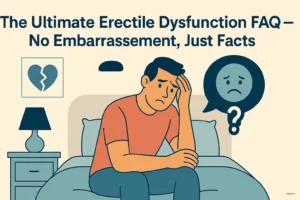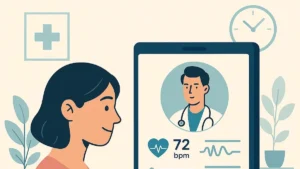
Millions of Americans have made the pledge to lose weight in 2025.
Unfortunately, experts say the failure rate for these goals is as high as 88% after only two weeks! When it comes to weight-loss, a lot of attention is given to diet exercise, but hormone regulation is often overlooked, and it may be a bigger part of the weight-gain problem than many think, says Healor Founder Dr. Raj Singh M.D.
“We’re not trying to downplay the importance of exercise and better lifestyle decisions, but hormones are a big factor, too. If they are not balanced, that can present a huge challenge to men and women looking to lose weight,” Singh says.
The physician recently discussed some of the common hormone issues tied to weight-loss resistance.
Low Thyroid Hormones
The thyroid gland resides in the neck, and some of the hormones it produces have a hand in regulating metabolism. Hypothyroidism, or low thyroid hormones, can increase weight and cholesterol levels while negatively affecting heart function. Men experience hypothyroidism, too, but women are five to eight times more likely. Hypothyroidism manifests slowly, Singh explains. Over the course of years, some of the common symptoms that show up are:
- Fatigue
- Weight gain
- Dry skin
- Puffy face
- Depression
Low Testosterone
Testosterone is a sex hormone that regulates libido, muscle mass, and fat distribution. Testosterone levels lower than 300 nanograms per deciliter of blood are often tied to compromised sex drive, but also increased body fat, particularly around the abdomen. A number of factors can cause low testosterone, including medicine side effects, poor thyroid function, and other chronic diseases.
“Low testosterone can also lead to hair loss, and even cause hot flashes in men, too,” Singh adds, “but weight gain is probably one of the first signs that testosterone levels may be low.”
Estrogen and Progesterone Imbalances
As women approach middle age, they often complain about hot flashes, mood swings and disrupted menstrual cycles. Fluctuating estrogen or progesterone levels are often responsible. What may be overlooked, however, is how both hormone’s work together to regulate metabolism, as well as bone and muscle mass. When the hormones are out of balance, the body may retain water and give a bloated feeling, too.
What You Can Do
Patients are often surprised by how small exercise and diet changes suddenly produce big weight-loss improvements for them once hormone imbalances are addressed. Dr. Singh hears his patients also speak of the pleasant surprise of improved intimacy with hormone balancing as well.
Patients can opt for traditional hormone replacement therapy (HRT) or powerful plant-based bioidentical hormone therapy (BHRT), as well as thyroid medications to help them on their weight-loss journey. Singh also recommends a physical assessment with a full blood work-up before starting HRT or thyroid medication. And remember, lifestyle changes, exercise and stress management will work in partnership with hormone rebalancing on your weight-loss journey.
“It’s important to get your blood work done, and to have a thorough physical because there may be several underlying reasons for slow weight-loss progress,” Singh notes. “The great news is that, if you’re committed to doing the work, your doctor can help you get the results you want pretty quickly.”
To learn more about how to achieve weight-loss goals, contact us for a consultation.








